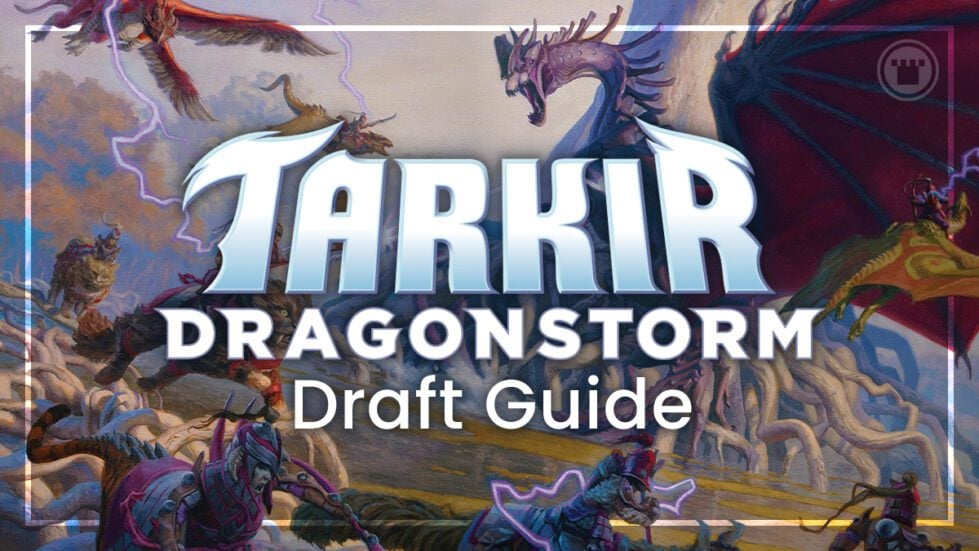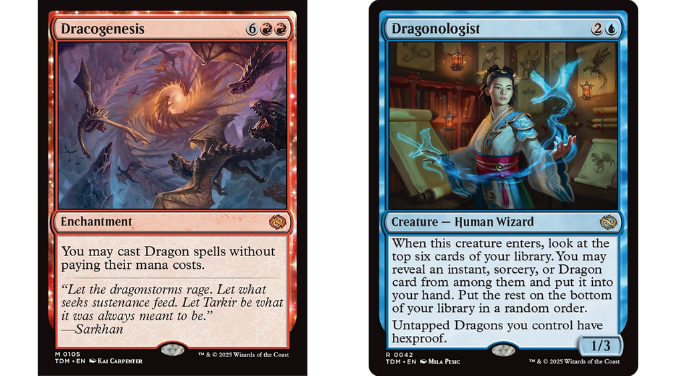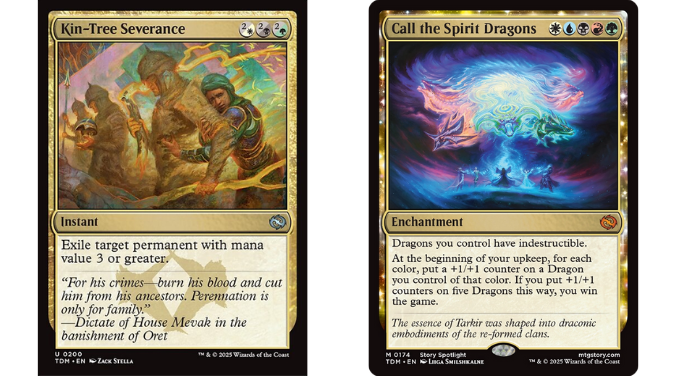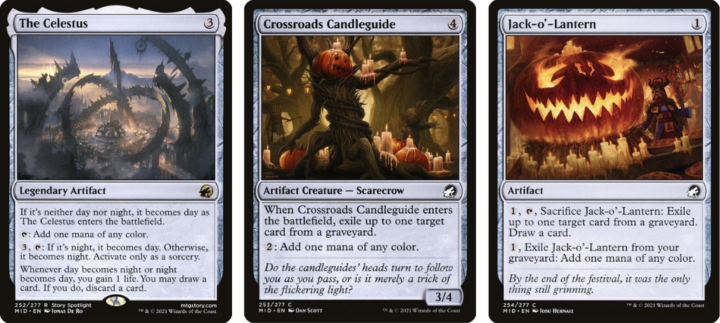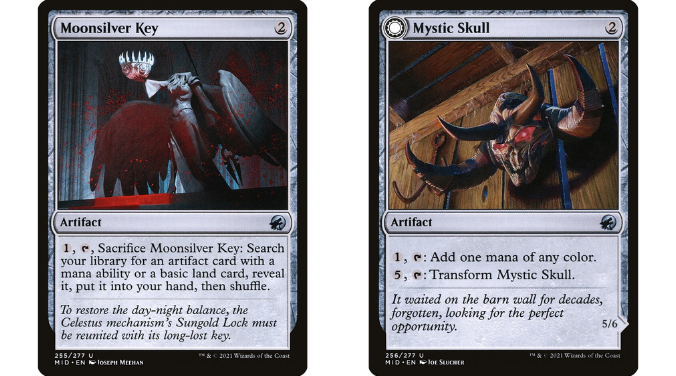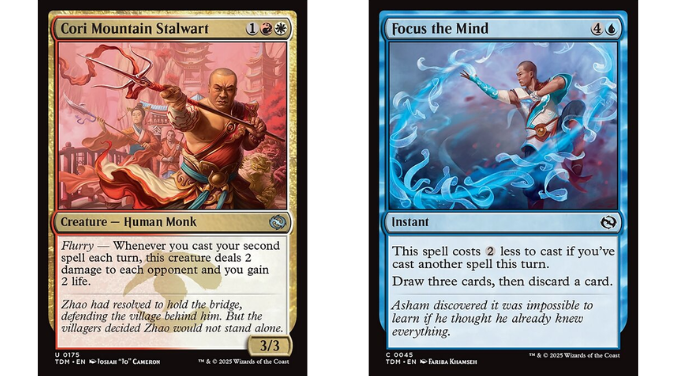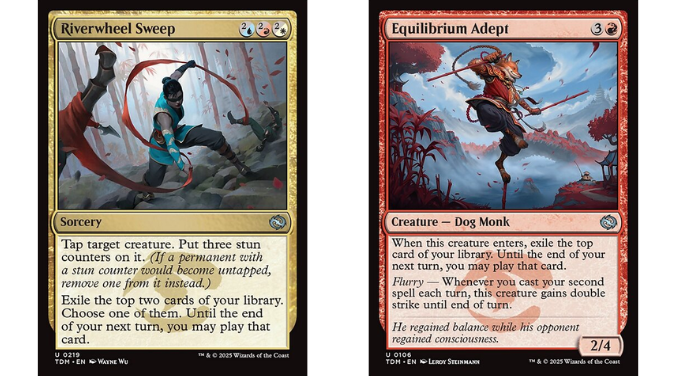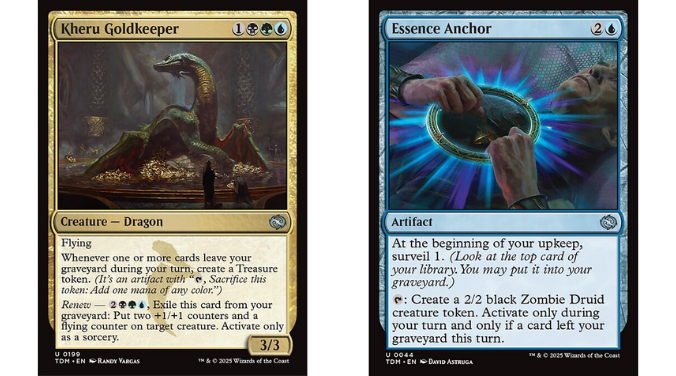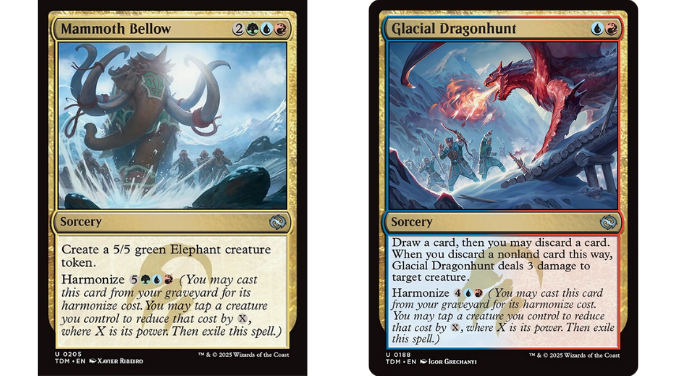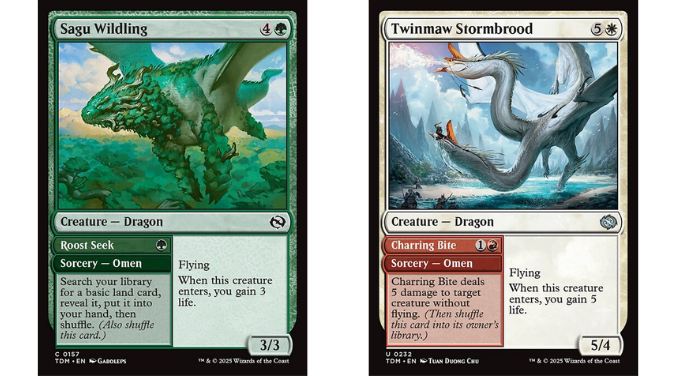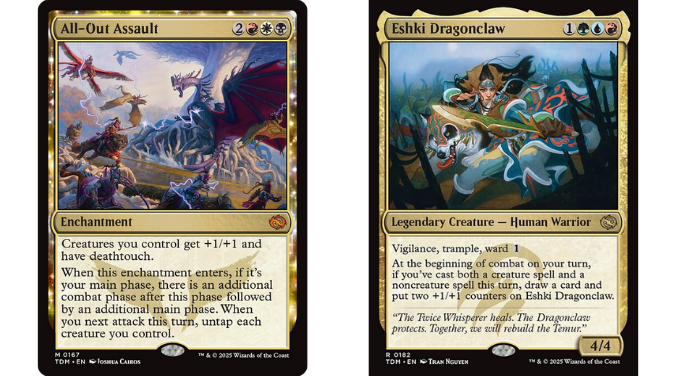Much of the excitement (from myself and other writers) for Tarkir: Dragonstorm has revolved around its seeded Sealed experience. It’s a great idea to give players a chance to pilot their clan of choice and really enjoy that aspect of the plane and the Limited environment.
But the original Khans block was also a legendarily good Draft format – one of the best of all time, according to many fans – and there’s a lot of pressure on Dragonstorm to build on that pedigree. After putting in the hours to explore this format I can say it does truly live up to the hype, with exciting mechanics and unique archetypes anchored by plentiful dragons!
Read on to learn how you can master this high-powered Draft set and all its clans (plus a secret sixth archetype!) in our official Card Kingdom strategy guide.
SHAPE OF THE FORMAT
As in Sealed, the broad possibilities of Tarkir: Dragonstorm Draft are defined by Tarkir’s five clans, and its numberless dragons.
In a normal format, playing 3+ colors or a top-heavy curve is something you need pretty specific circumstances to pull off – but here, those are the default settings for every deck. The color-fixing in particular is extremely generous: the land slot offers not just each clan’s signature three-color tapland, but also all 10 two-color versions and Evolving Wilds to boot!
You’ll notice in the deck images below how consistently my decks are playing 5+ fixing lands, and that’s without even turning down strong playables to pick them early. So long as you’re proactively picking them above “replacement-level” spells, you can find your quota nearly every time. But the lands aren’t the end of this fixing bonanza, not by a long shot. The Monument cycle and Embermouth Sentinel can find any missing basics off just generic mana, while Dragonstorm Globe is a very good manalith given what the top end you’re ramping towards usually consists of.
More than just the unprecedented quantity of this fixing (there’s even more available in green) is how “free” most of it is to include in your deck. Even when a set offers reliable access to fixing, you normally accept some kind of tempo hit in return for that flexibility. Midnight Hunt had all kinds of different colorless fixers included, but all of them need a few mana invested upfront, or are inherently inefficient.
But there’s no such tax associated with fixing spells in Dragonstorm. The cycle of Initiates are all actively good common creatures, which just happen to also give you free access to their clan’s colors. The low cost of fixing combined with the high density of bombs is what makes playing rainbow decks almost mandatory in this format: if you don’t, opponents will simply outgun you with their better access to high-tier spells.
The other key thing to understand about having all those dragons in the set is how it has affected the removal suite. Simply put: interaction is plentiful, cheap and strong. The Exhale cycle are good regardless of whether you have dragons to behold, and every color has several other efficient options to choose from.
Even with Snakeskin Veil and some off-color imitators available to protect your threats, it’s quite difficult keeping small to medium creatures alive over time. Only the largest dragons really feel like they have any survivability, and they can still easily be exiled, stunned, or otherwise indisposed in a number of ways.
That’s one reason why playing smaller creatures is still important on your way to the lategame: you need to tie your opponent’s early resources up with something else so you have more than once chance to try and stick a bomb before your opponent’s board gets too threatening.
COLOR & ARCHETYPE BREAKDOWN
As I mentioned above, the three-color “wedge” combinations corresponding to each clan are our foundation here. In other formats, I advise folks to identify one “base” color to draft around so they can keep their choice of second color open longer: in Dragonstorm you start with a two-color base and then decide where to pick up a third color (and fourth, and fifth).
Not all base-color combinations are created equal, however. While all the dual-color taplands are present, the spell slots for allied color pairs have been used on three-color cards instead. There’s also only one matching clan per allied color pair, so they don’t actually keep you open the way that an enemy color pair does.
Even with the power of fixing in Dragonstorm, I found it most comfortable to play decks with two base colors and a smattering of rare splash cards. But the difference in playstyle and mechanics associated with each clan is enough that I still think defining our archetypes in three colors is the way to go: a WBr deck with Mardu enablers will have different priorities and playstyle to a WBg one, even if they are superficially similar.
Jeskai (Red-Blue-White)
It’s important to understand that each clan in Dragonstorm is capable of both aggressive and reactive playstyles, and the Jeskai are perhaps the best example. Their flurry mechanic generates extra value whenever you cast more than one spell in a turn. Whether you use it to exaggerate your tempo advantage from rapidly dumping a hand of cheap spells or methodically trigger it turn after turn with cantrips to outlast your foe is up to you.
Either way it’s important to make sure you have a lot of spells costing two or less mana, as well as some that can generate card advantage so you can keep up the double-spelling pace. Dragon cards with omens are a natural fit, particularly Stormshriek Feral and Dirgur Island Dragon. These beasties also give you lategame wincons without diluting your desired low average mana cost.
Harmonize spells are also good ways to keep your hand filled, especially Glacial Dragonhunt and Unending Whisper. Recursion effects like Auroral Procession and Kishla Trawlers then let you recur any non-Omen, non-harmonize spells, and you can even set up loops of such effects to keep your engine ticking in longer games. Cards which return to hand like Fleeting Effigy, Wingspan Stride and Furious Forebear offer yet another opportunity to artificially extend your supply of cheap flurrying fuel.
Jeskai builds based around white and red will want to leverage combat tricks and other high-tempo spells with bundled card advantage (such as Rebellious Strike or Riverwheel Sweep) to paralyze the opponent while running them over with efficient creatures. Builds which center more on blue and red are more likely to splash green for ramp, and hold the line with removal before dominating the lategame with a combo of bombs, card draw and control effects.
Mardu (White-Red-Black)
My personal favorite clan is probably the hardest deck to find consistent success with. The default token-aggro gameplan dictated by the clan’s mobilize mechanic is under huge time pressure to close games before late-game decks slam the door. Taking constant body blows from Dragonstorm‘s hyper-efficient removal suite doesn’t make it any easier either.
It might not seem like spot removal would be that painful for a go-wide deck, but Mardu actually does rely on key synergies beteween specific creatures to unlock their scary damage potential. Unfortunately, this means more skilful opponents will be holding their kill spells to answer those enablers as soon as they appear. This, as well as the inherent risk your mobilize creatures face every time they attack to use their trigger, all but forces you to invest in defensive tricks that will further complicate your draws and sequencing.
The other frustrating thing about mobilize is that it naturally works best when board sizes are small and opposing blocking options are limited. Unfortunately, the trade-happy playstyle which you need to force such small boardstates is at odds with how synergy-heavy the Mardu archetype ends up being.
Cards like Venerated Stormsinger, Bone-Cairn Butcher and Zurgo’s Vanguard really gain power the more of them you have in play, but you don’t usually want to wait until that happens to start getting in damage. So now you need to be curving out smoothly from Shock Brigade to the Vanguard to Dalkovan Packbeasts, and also holding up removal or tricks to ensure the early creatures survive their swings… it’s just a lot of things that have to go right for a three-color aggro deck in Limited.
Base white-red Mardu decks have a very potent angle of attack where they play around keyword-having cheap drops and powerful tricks to trump early blockers and follow up with efficient removal or burn to finish. Base white-black decks aren’t especially common or easy to put together since the strong mobilize cards are in red. But if you’re able to assemble the right suite of cards around sac engines and/or +1/+1 counters it can lead to some powerful draws.
Abzan (Green-White-Black)
Compared to other clans, the Abzan mechanics don’t really point you towards any one obvious playstyle. Endure just adds extra power and toughness to creatures, which is always good, and the choice between counters or tokens makes it even more versatile.
Besides playing around opposing creatures and removal, which choice you favor likely depends on which support cards you’re able to draft: cards like Marshal of the Lost and various sac outlets reward going wide, while Stalwart Successor, Host of the Hereafter and Hundred-Battle Veteran can incentivize going tall.
Your splash colors also affect things, of course. Base white-black drafts favor the token synergies, with mobilize creatures from Mardu really supercharging cards like Salt Road Packbeast, Stormbeacon Blade and Hardened Tactician. Base black-green lists splashing in Sultai tech can leverage various renew creatures to expand their +1/+1 counter toolkit. Green already has a massive advantage over other colors when it comes to three- and four-drops, and with the extra boost from those counters you can really snowball midgame boardstates into huge bursts of damage.
But with even more fixing available from green cards and a naturally grindy midrange playstyle, you shouldn’t be afraid to mix and match both sides of the Abzan in one deck. It helps that there’s cards like Unburied Earthcarver and Duty Beyond Death which can turn mobilize tokens into counters to help bridge that gap. Just make sure to bring enough removal to contend with the many dragons you’ll have to outlast in those longer games!
Sultai (Black-Blue-Green)
As in their previous incarnations, the Sultai are built to use the graveyard as a resource, although you’ll need to find their mythic rare spirit dragon if you want to enjoy Delve spells again. The clan’s new mechanic, renew, uses the graveyard mostly to power up creatures in play rather than discount them.
The fact renew only exiles one card from the yard at a time both reduces the amount of self-mill you need to support it, and sets up the prevailing value engine for this Draft archetype. So long as you are able to get one card to leave your yard each turn – whether that’s through renew, harmonize, or one of the many excellent recursion spells in Dragonstorm – you will be able to trigger various benefits, from card draw to free treasure tokens or zombie druids.
It’s an intriguing angle to try and draft around, even if there are some confusing differences in how cards are worded. Some triggers only work once per turn, some multiple times. Effects like Rite of Renewal or Kishla Trawlers can create multiple triggers on their own – but Sultai’s actual gold uncommon, Rakshasa’s Bargain, won’t trigger anything.
There’s also multiple combinations of these recursion spells that can pick each other out of the yard to create repeatable loops, which is even nicer here than in Jeskai. Try not to get too cute and comfortable with such wheel-spinning, however: the truly greedy 5c decks are always threatening to overpower you in the late-game, so take any chance you can to press an advantage.
Sultai decks that are base black-green are more likely to focus on curving out and applying consistent pressure with growing creatures backed by removal. Base blue-black builds will have more ability to really abuse those recursion tools and slow the game all the way down with mass removal before winning with whatever creature you draw to put your renew buffs on.
Temur (Blue-Red-Green)
At this point I am convinced Temur is straight-up the best deck in Dragonstorm Draft. Not only that, it’s #1 by a comfortable margin, and I think it’s the best color combination for virtually every strategy and playstyle – creature midrange, tempo with combat tricks, or removal-heavy control.
I don’t think this makes the format unplayable or even un-fun, but it’s an inescapable conclusion even after a handful of drafts. If you’re looking for a simple strategy to maximise your winrate, then you should be biasing every draft around getting into these colors and then figuring the rest out from there.
Part of this dominance is just that the naturally greedy nature of the set as a whole seems to favor the clan who are designed as a ramp-and-big-spells archetype. It’s also due to the extremely solid curve of creatures: green and blue have the best two- and three-drops on rate, and green cleanly stands on its own for four- and five-drops.
Part of it is the harmonize mechanic, which gets you two uses of what are already your best spells and lets you effectively spend twice as much mana per turn as your opponent. That latter part is completely absurd in the modern game where mana advantage, aka tempo, is by far the best metric for predicting wins. What do you need to do to set up this impressive value engine? Why, just play the above-rate creatures and excellent interaction you were already picking!
It really does feel a touch unfair, especially when tapping creatures like Rescue Leopard and Traveling Botanist is able to tack on even more bonus value. Casting a spell with harmonize is also among the best ways to trigger Sultai cards like Kishla Skimmer, as mentioned earlier.
In a format where every deck has some lategame firepower, Temur naturally reaches that phase faster with ramp and dominates it with mammoth tokens and dragon synergies. But you can also easily find success playing Temur with an aggressive, low-curve philosophy. The best harmonize spells are all cheap on their first cast, and with a battery of Rescue Leopards and Temur Tawnybacks in the three-drop slot you are positioned to maximize the power of buffs like Dragonclaw Strike, Synchronized Charge, Fire-Rim Form and Snakeskin Veil!
True Five-Color: Rainbow Dragons!
No, it’s not just a meme or a one-time fluke build: five-color greed is an absolutely consistent draft archetype in Dragonstorm, and it might be the best of the lot!
There’s a few factors that make this deck viable. Obviously the unprecedented level of color fixing in the set is one part, and you should definitely be vacuuming up those taplands if you’re attempting to play a true five-color list. But the mere presence of so many taplands also plays in your favor, slowing down the pace of games overall and making it even easier to blunt enemy aggro with your powerful low-cost interaction.
Having a lot of that interaction come as an alternate mode of your late-game flyers is game-changing for this deck, and the main reason why I’m calling it “Rainbow Dragons” and not “Rainbow Rares”. Getting as many rares as possible is still important though, since almost every Dragonstorm rare is excellent in Limited and the ability to play them all together is a huge advantage you to lord over three-color peasants!
Obviously you can flow into this archetype from any base colors, but it tends to bridge most gracefully from Temur (another reason it’s the best clan) or Jeskai. I put this down to the most important omen effects being Stormshriek Feral, Twinmaw Stormbrood and Dirgur Island Dragon, but it might also just be that any Abzan or Sultai drafts which start pivoting into this archetype end up indistinguishable from the Temur versions.
I can’t really speak more specifically about this deck as you’re usually playing around the specific combination of bombs you’ve managed to pull in. Just try to get as much fixing and instant interaction as you can for the early game and weather the storm until you assemble your colors and take over the skies!
ROCK THE DRAGON-STORM
This has turned out to be a really intriguing format to analyze. Tarkir: Dragonstorm isn’t the most balanced Draft set I’ve played in terms of the different clan and color options, but I believe the overall metagame is nevertheless healthy, and all the decks are interesting with different ways to tweak their build and playstyle.
The admitted superiority of the Temur and 5c decks depends on having lots of the cards that are in highest demand – fixing lands, omen dragons, cheap removal, bomb rares – so there’s an inherent diminishing return as more players in a Draft pod try to assemble it.
Meanwhile Mardu and Abzan decks (or just aggressive, trick-heavy builds more generally) are nearly always open and can really eviscerate a tap land-heavy start from those greedy decks once you understand the right mix of creatures and spells to make them hum. Factor in weird but playable build-arounds like Tempest Hawk, Call the Spirit Dragons and The Sibsig Ceremony, and you’ve got a format that gives players a lot of room to draft creatively without the major archetypes losing their identity.
As someone who was on hiatus from Magic and missed the original Khans of Tarkir block completely, I can assure you that Dragonstorm is far more than a mere nostalgia trip – this is a really excellent Limited experience.

Tom’s fate was sealed in 7th grade when his friend lent him a pile of commons to play Magic. He quickly picked up Boros and Orzhov decks in Ravnica block and has remained a staunch white magician ever since. A fan of all Constructed formats, he enjoys studying the history of the tournament meta. He specializes in midrange decks, especially Death & Taxes and Martyr Proc. One day, he swears he will win an MCQ with Evershrike. Ask him how at @AWanderingBard, or watch him stream Magic at twitch.tv/TheWanderingBard.

